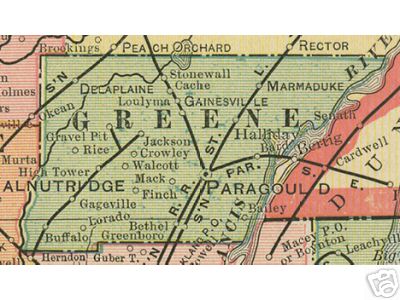The Greene County Wild Man May 20, 2015
Author: Beach Combing | in : Modern , trackbackWhen we think wild men most readers will think sasquatch and yeti: when people in the nineteenth century (and before) thought wild men they thought lunatics or hermits who had gone to live in the wood and who had lost touch with humanity. Perhaps in mythic terms there is not that much difference? However, this account here is peculiar in that it belongs as much to the first as to the second category, yet it dates to 1851. Note that ultimately the monster is, according to the writer, a human being who has crossed the line between nurture and nature. Of course, modern researchers routinely talk about ‘the Greene County Bigfoot’. Perhaps we are close here to the genesis of what might be called ‘Yeti folklore’.
During March last, Mr. Hamilton of Greene County, Arkansas, while out hunting with an aquaintance, observed a drove of cattle in a state of apparent alarm, evidently pursued by some dreaded enemy. Halted for the purpose, they soon discovered as the animals fled by them, that they were followed by an animal bearing the unmistakeable likeness of humanity. He was of gigantic stature, the body being covered with hair and the head with long locks that fairly enveloped his neck and shoulders. The ‘wildman,’ for we must so call him, after looking at them deliberately for a short time, turned and ran away with great speed, leaping from 12 to 14 feet at a time. His footprints measured 13 inches each.
This singular creature has long been known traditionally in St. Francis, Greene and Poinsett counties. Arkansas sportsmen and hunters having described him so long as seventeen years since. A planter, indeed, saw him very recently, but withheld his information lest he should not be credited, until the account of Mr. Hamilton and his friend, placed the existence of the animal beyond cavil.
A great deal of interest is felt in this matter, by the inhabitants of that region, and various conjectures have been ventured in regard to him. The most generally entertained idea appears to be that he was a survivor of the earthquake disaster which desolated the region in 1811. Thrown helpless upon the wilderness by that disaster, it is probable that he grew up in his savage state, until he now bears only the outward resemblance of humanity.
So well authenticated have now become the accounts of this creature, that an expedition is organizing in Memphis, by Col. David C. Cross and Dr. Sullivan to scout for him. Prest Chronicle 28 Jun
Wild stuff! Any more on the GC Wild Man? Drbeachcombing AT yahoo DOT com
25 May 2015: Chris from Haunted Ohio Books puts this one to bed.
On the Arkansas Wild man. Here is an earlier report from Greene County. “Croles’ Ridge” is now Crowley Ridge.
A WILD MAN A man in a wild state, it is said, has been seen in the swamps near Croles’ Ridge, about the Arkansas and Missouri line; his track measures 22 inches; his toes are as long as a common man’s fingers; and in height and make, he is double the usual size. Boston [MA] Daily Bee 16 March 1846: p. 4
See this biographical sketch of Col David C. Cross. http://www.findagrave.com/cgi-bin/fg.cgi?page=gr&GRid=20125526. This is a pattern seen in some other monster reports–genuine (and usually notable) individuals are mentioned in connection with a search or as witnesses. Unless the newspapers had some animus against those people and were not afraid of being sued for libel, I’ve always wondered why distinguished individuals would lend their names to a hoax. Maybe everybody knew it was all in good fun?
Another pattern: Mr Hamilton’s account got quite a lot of newspaper coverage–but not in Arkansas. It seems to have struck a nerve with editors up and down the eastern seaboard. The New Orleans Times-Picayune of 15 May 1851 is the earliest version I can find of the Hamilton story–and the closest geographically to Arkansas.
The Wild Man of Arkansas seems to have entered into newspaper folklore, as he is also referenced later than 1851, usually with jocular comment about him dodging the draft, or being told how to vote, or being cleaned up and made editor of some New York paper.
Thanks Chris!



